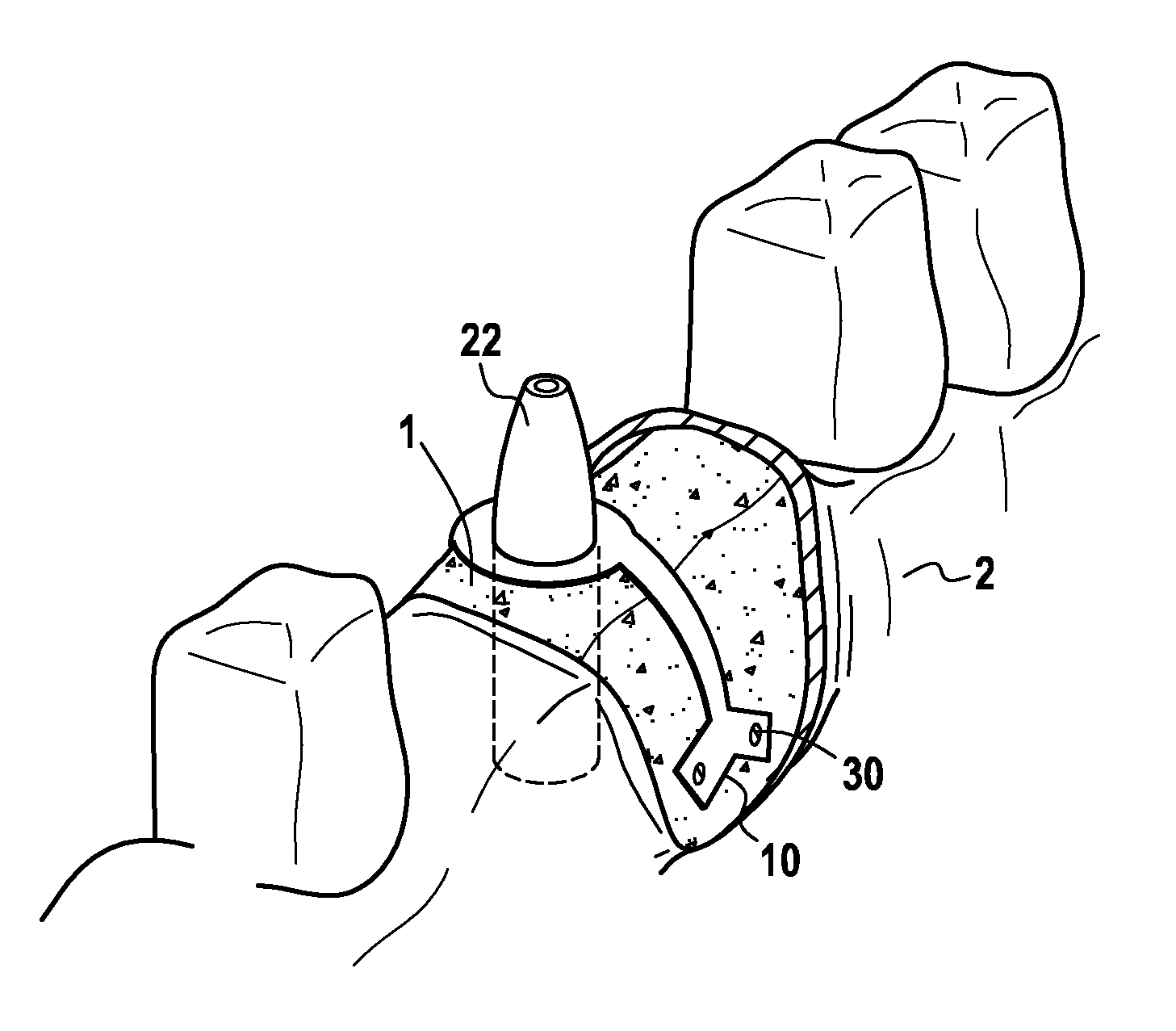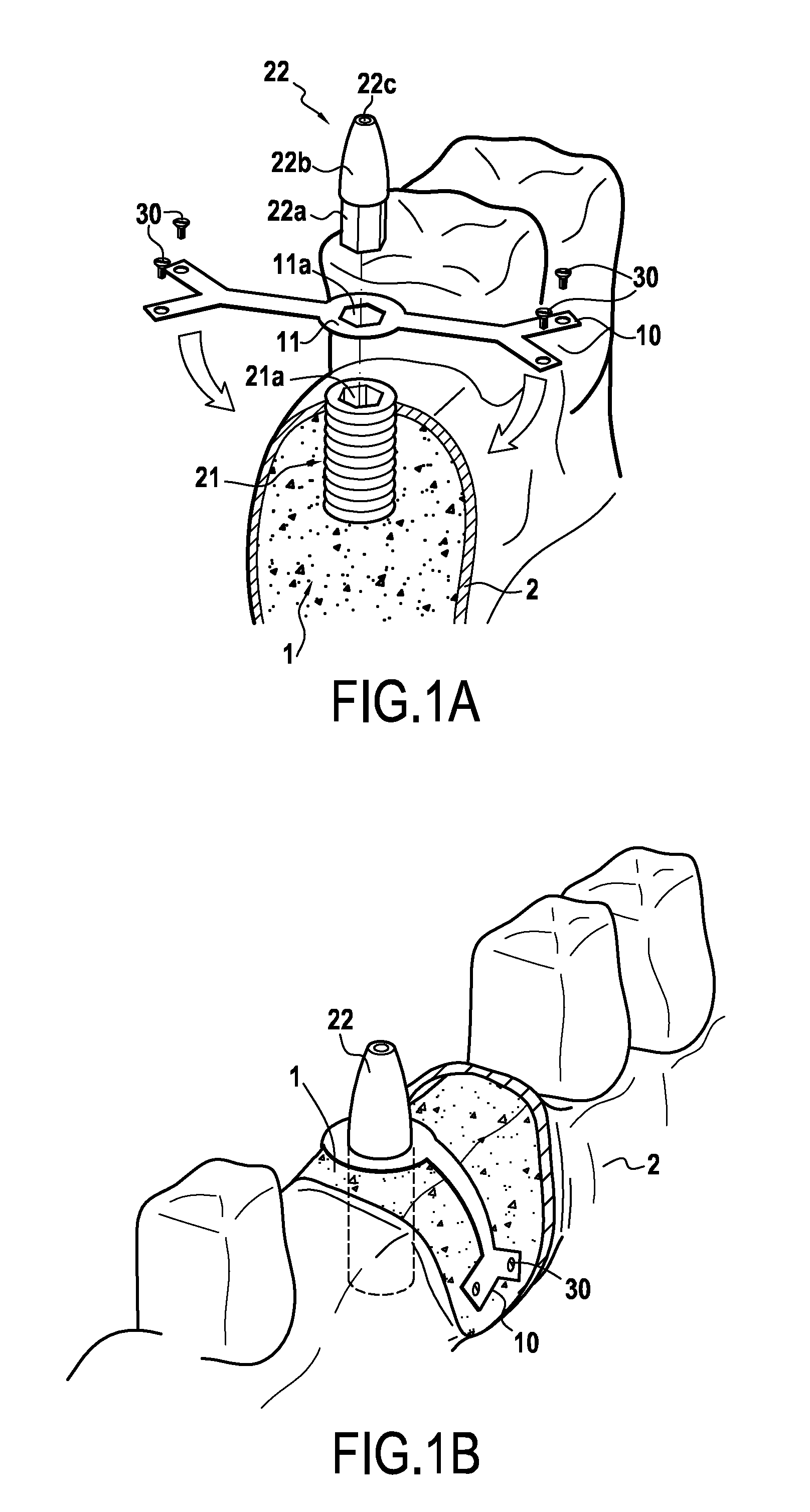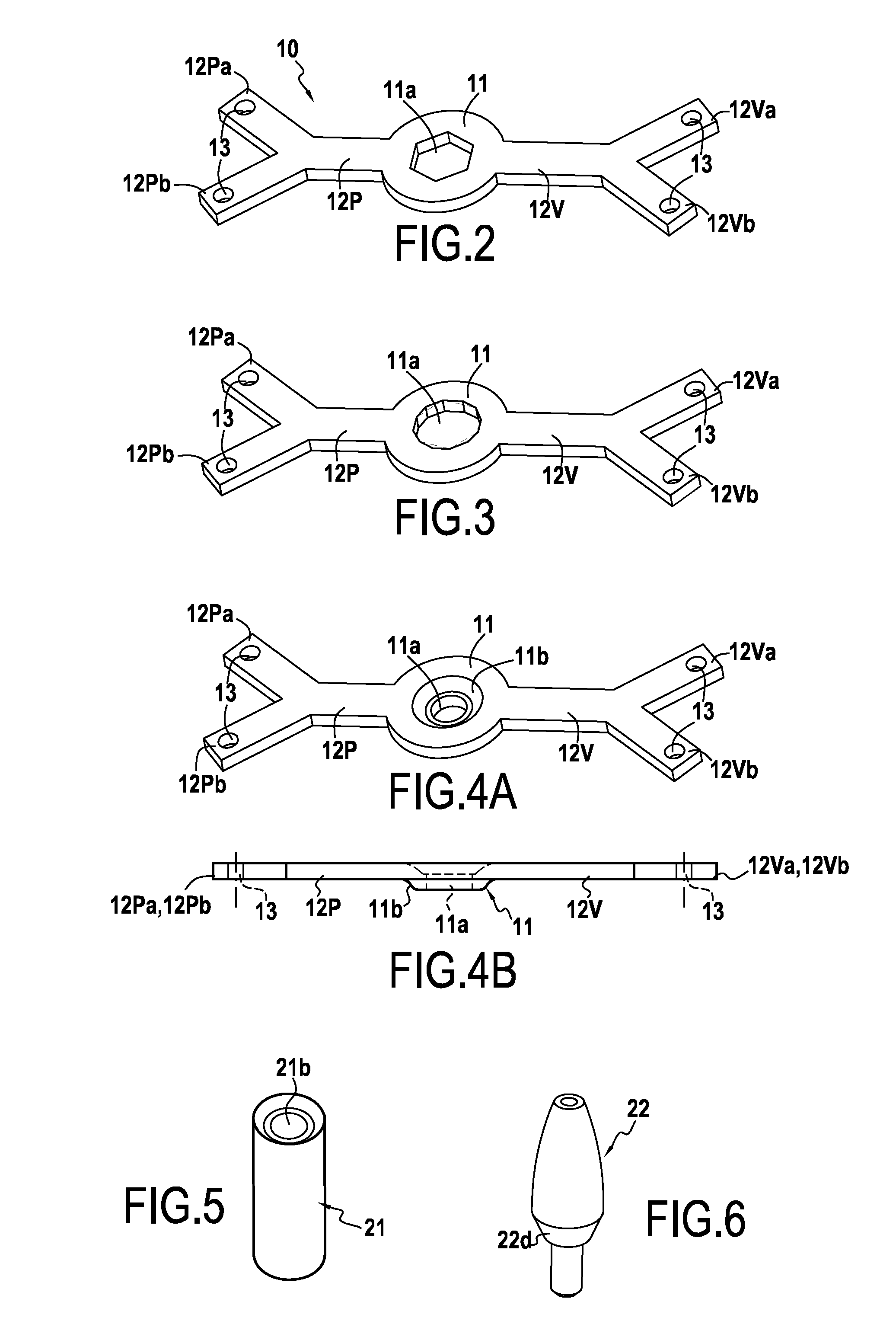Additional stabilization device for endo-osseous dental implant
a dental implant and stabilization device technology, applied in dental implants, dental surgery, medical science, etc., can solve the problems of not being able to make teeth, not always allowing proper stabilization of implants on bone level, and not being able to provide anti-rotational means to the anchoring foo
- Summary
- Abstract
- Description
- Claims
- Application Information
AI Technical Summary
Benefits of technology
Problems solved by technology
Method used
Image
Examples
first embodiment
[0078]FIG. 2 shows a first application of a first embodiment according to the invention, wherein the perforation 11a of the central platform 11 has a hexagonal shape. The central portion 11 has two side extensions as arms 12P and 12V which each assume the shape of a Y and therefore comprise at their ends, two branches, 12Va, 12Vb and 12Pa, 12Pb, respectively. It is noted in this figure that the arm 12V is longer than the arm 12P. This meets an anatomic need. Indeed, it is desirable that the side extension 12V intended to be fixed on the vestibular side be longer than the side extension 12P intended to be fixed on the palatine side.
[0079]FIG. 3 illustrates a second application of the first embodiment according to the invention, wherein the perforation 11a comprises twelve sides and therefore has a dodecagonal regular polygon shape. This application gives the possibility of placing the hexagon of the pillar 22 illustrated in FIG. 1 inside the perforation 11a in six different angular p...
second embodiment
[0081]FIG. 4 shows a stabilization device according to an application of a This stabilization device 10 is intended to operate by cooperating with an implant comprising an anchoring foot of the type of the one illustrated in FIG. 5 and an external pillar of the type of the one illustrated in FIG. 6. In this embodiment, anti-rotational frictional means are used between the external foot 22 of FIG. 6 and the anchoring foot 21 of FIG. 5 in order to inhibit their relative movements. Such anti-rotational frictional means are generally formed by a portion 22d of the base of the pillar 22 having a conical shape and intended to bear upon a matching also conical shape 21b of the anchoring foot 21. When the external pillar 22 is placed in the anchoring foot and fixed by screwing a screw introduced into the orifice 22c, the presence of the conical surfaces rubbing against each other gives the possibility of avoiding relative rotation of the pillar 22 relatively to the anchoring foot 21. Here ...
PUM
 Login to View More
Login to View More Abstract
Description
Claims
Application Information
 Login to View More
Login to View More - R&D
- Intellectual Property
- Life Sciences
- Materials
- Tech Scout
- Unparalleled Data Quality
- Higher Quality Content
- 60% Fewer Hallucinations
Browse by: Latest US Patents, China's latest patents, Technical Efficacy Thesaurus, Application Domain, Technology Topic, Popular Technical Reports.
© 2025 PatSnap. All rights reserved.Legal|Privacy policy|Modern Slavery Act Transparency Statement|Sitemap|About US| Contact US: help@patsnap.com



